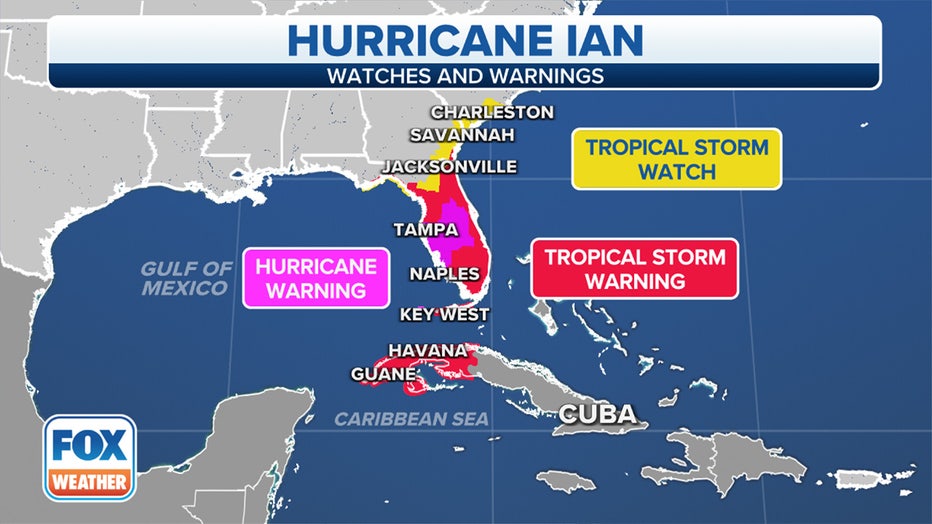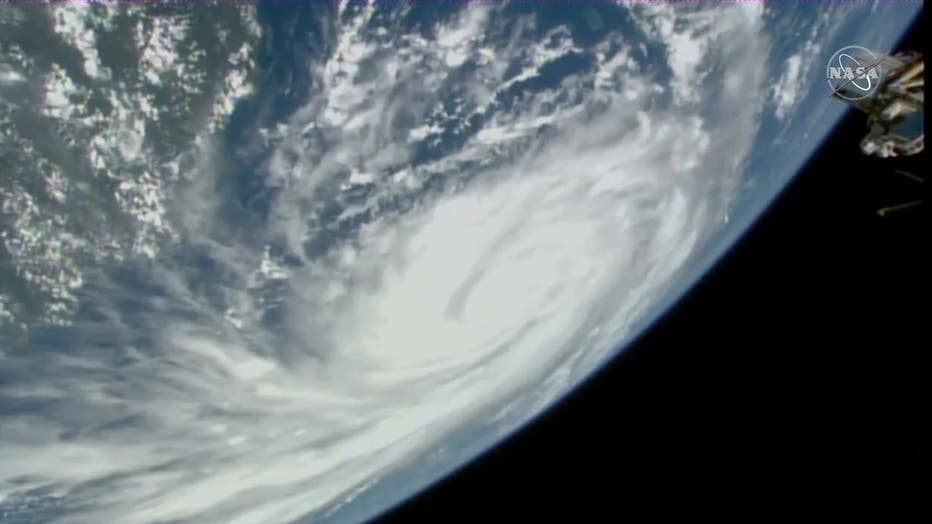As Ian heads north, here's everything about hurricanes you need to know
All About Hurricanes
All eyes are on the tropics as active storms develop threatening life and property. In this Weather or Not, we explore how hurricanes are formed, what gives them strength and the predictions for this hurricane season.
FOX 2 - One can argue that hurricanes are nature’s most powerful storm. In the Atlantic Ocean, hurricanes are formed from thunderstorms moving off the west coast of Africa, feeding off ocean water with a minimum temperature of 80F with a lack of vertical shear above it, allowing the storm to grow.
This Low pressure may eventually develop into a tropical depression with wind speeds less than 39 mph.
As the storm gets stronger, and winds increase to more than 39 mph, it becomes a tropical storm and for identification purposes, is given a name. With wind speeds faster than 74 mph, depending on geography, a typhoon, cyclone, hurricane is born.
Hurricane strength is defined on a 1 to 5 category scale that estimates property damage. Although fatalities and wind damage can occur during any of these 5 categories, hurricanes reaching category 3 or higher are considered major hurricanes based on their potential for loss of life and structural damage.
The eye of the hurricane is comprised of rising and sinking air, surrounded by the storm’s most powerful thunderstorms. Breaking the structure of the hurricane into quadrants, the right front quadrant is considered the most dangerous.

Current watches and warnings in effect for Hurricane Ian.
Torrential rainfall, and deadly storm surge as the hurricane nears landfall accounts for numerous fatalities and widespread damage.
Although Michigan is far from the tropics, we track the storms and bring you live reports from our correspondents.
2020 ended up being the most active Atlantic hurricane season on record. According to the National Hurricane Center, 2020 featured 30 named storms, 14 of them transitioning from Tropical Storm to Hurricane strength.
A montage from NOAA satellites shows them all. 2020’s Atlantic hurricane season was so extensive the names allocated for the storms were all used, resulting in the use of the Greek alphabet, a practice that was retired.
2021 used all the designated tropical names too and in both years, although the hurricane season begins June 1st, storms formed pre-season.
And both years were deadly. 416 fatalities in 2020, 194 in 2021 with damages in the billions.
La Nina, a natural climate pattern bringing cooler than average water temperature in the Pacific, was one of the contributors to the active hurricane seasons, mainly because it weakens the vertical wind shear in the Atlantic, allowing hurricanes to strengthen.
La Nina is present again this year, with our updated hurricane predictions for 14-20 named storms. So far, our start was a slow one, with the first storm Alex, actually starting within the season instead of before it. That hasn’t happened since 2014.
But now the tropics are getting active with Category 4 Hurricane Fiona flooding Puerto Rico and Canada, leaving residents without power.
Now, Florida is closely watching Hurricane Ian and the destruction it could bring. We still have more than a month left to hurricane season; it ends November 1st. Until then, all eyes will be on the tropics as we wait and prepare for the possibility of another active season.
I'm Meteorologist Lori Pinson for FOX 2 News.

(NASA/International Space Station)

